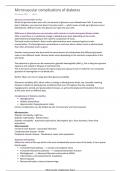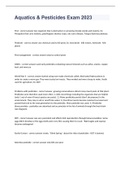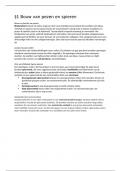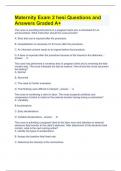Lecture notes
Microvascular complications of diabetes
- Institution
- University Of Surrey (UNIS)
Elevate your understanding of diabetes management with our detailed lecture notes on microvascular complications! This meticulously organized resource is ideal for students, healthcare professionals, and anyone interested in gaining a deeper insight into the significant health issues associated wit...
[Show more]












